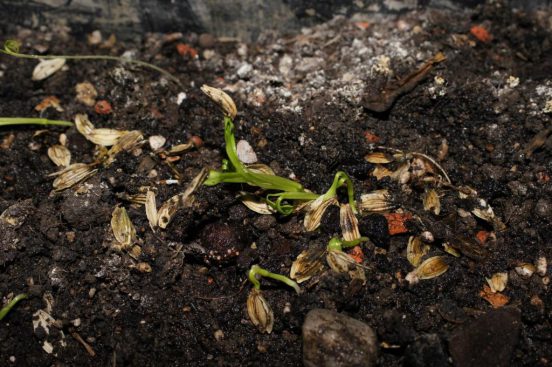At the very beginning of my botanical adventures, there was not just the chilli, but there were also other plants with particular power(s).
Ginseng, for example, the all but magical man-root with its ‘adaptogenic’ properties helping to cope with all kinds of stress and thus good for health and abilities.
Tea, the plant of which is the source of both green and black (and other) teas and can help both in being awake or in relaxing.
And, of course, there’d be an interest in more herbs and spices with a hot taste than just the chilli, considering that this taste is all too strange and special a thing…
Later, though, with the chilli producing only too well and with rather too many absences from the garden, these experiments were laid to rest. It also came about because my interest shifted to various vegetables which are rather more important for their everyday contribution to good health. After all, even the plant with the most peculiar of properties would only be taken sometimes, but food is eaten every day, and a diversity of plant foods is a good contributor to one’s well-being.
Delve deep enough in this topic, though, and the two themes overlap.

Bitter melon (kugua), for example, is just another (if peculiarly bitter) one of the various vegetables employed in tropical cuisines. Not the least of them the Chinese cuisine which I got to know. At the same time, though, kugua is seen as peculiarly conducive to good health.
An even stronger relation between ‘power’ and plants is to be seen in ashitaba. This ‘tomorrow leaf’ apparently has a rather localized origin, in just a part of Japan. There, it is grown as just another green vegetable, if possibly one making a good contribution to overall health. Thanks to various effects that ashitaba has been shown to (possibly) have, to the point of it being hailed as effective against tumors, it has become ever more popular – to the point where it is not just being grown more widely than before, but also to the point where another Southeast Asian plant said to have healing properties sometimes finds itself traded (wrongly) as ashitaba, all in the spirit of good marketing.

Whatever the effects, I find myself interested in it anyways, for it belongs to the family of Angelicas, which certainly do have their role as healing herbs are relatively difficult to cultivate – and are coming back for me, thanks to the seeds off a plant that I’d bought last year.
Having thought that the seeds hadn’t ripened fully, it was all the nicer to suddenly see signs of life from them.
Now, to see what will grow this year and what nice dishes can be prepared from it. A germinating seed does not a usable plant make…

Leave a Reply
You must be logged in to post a comment.